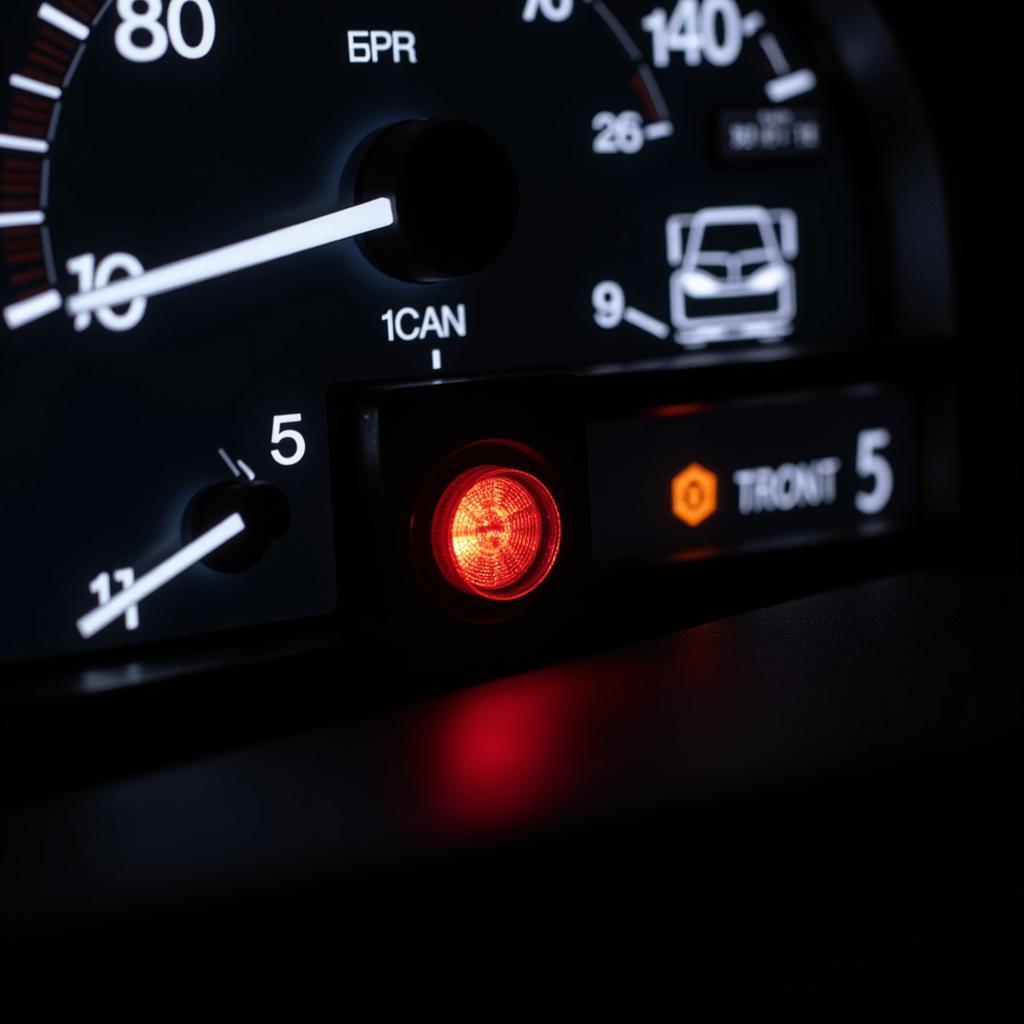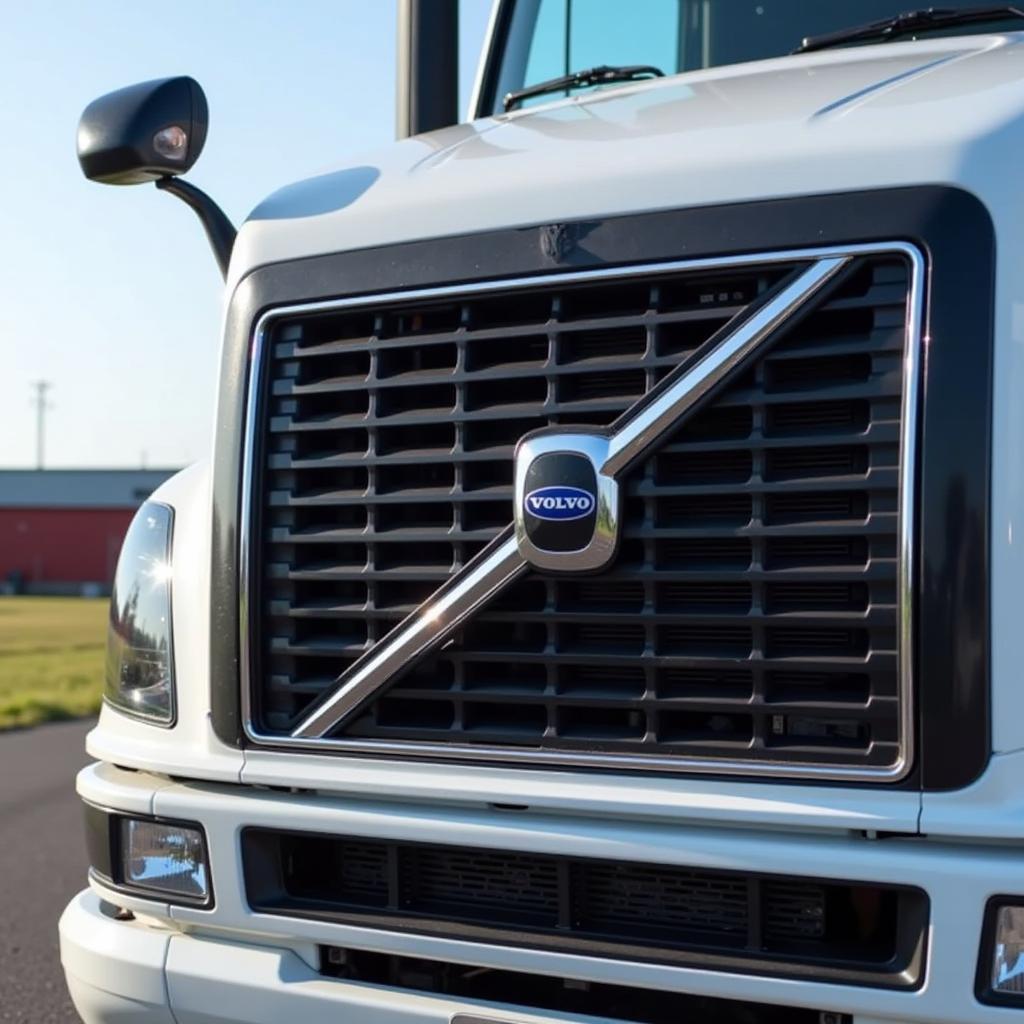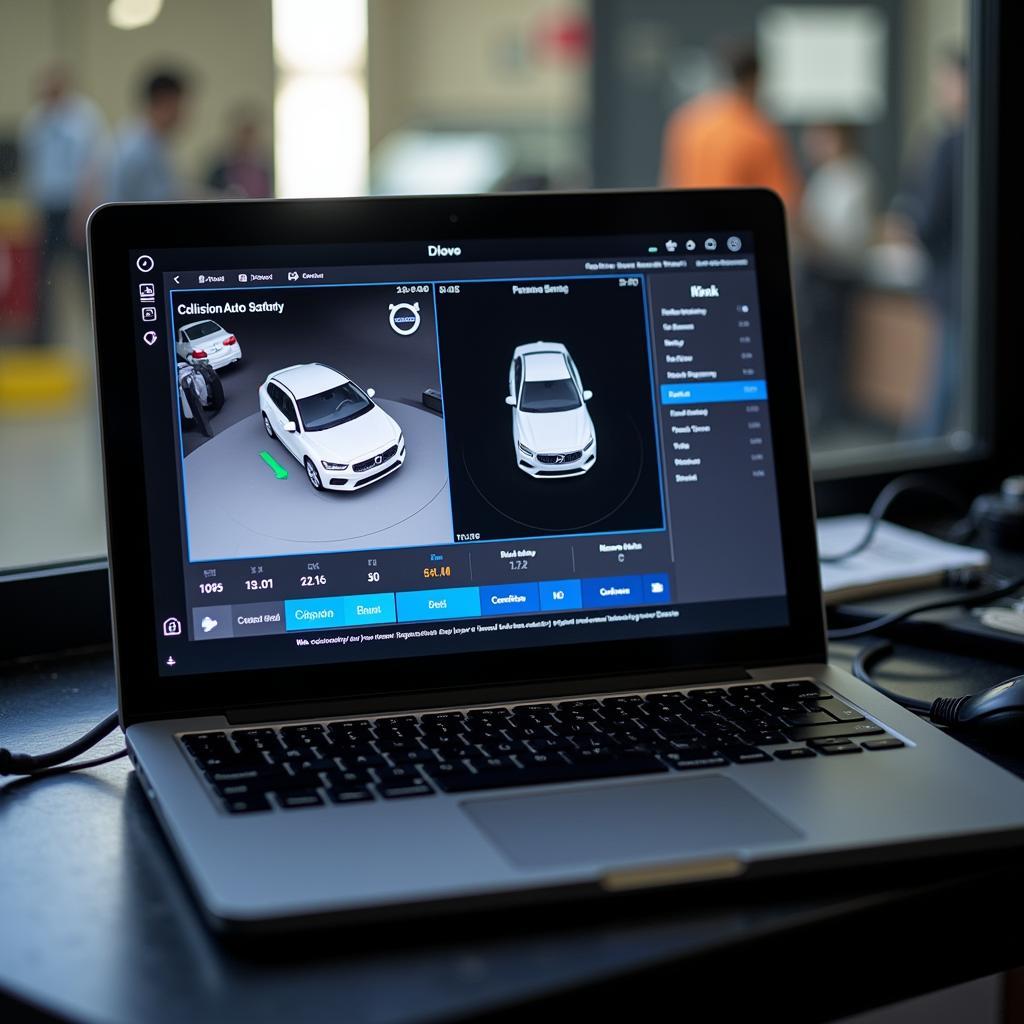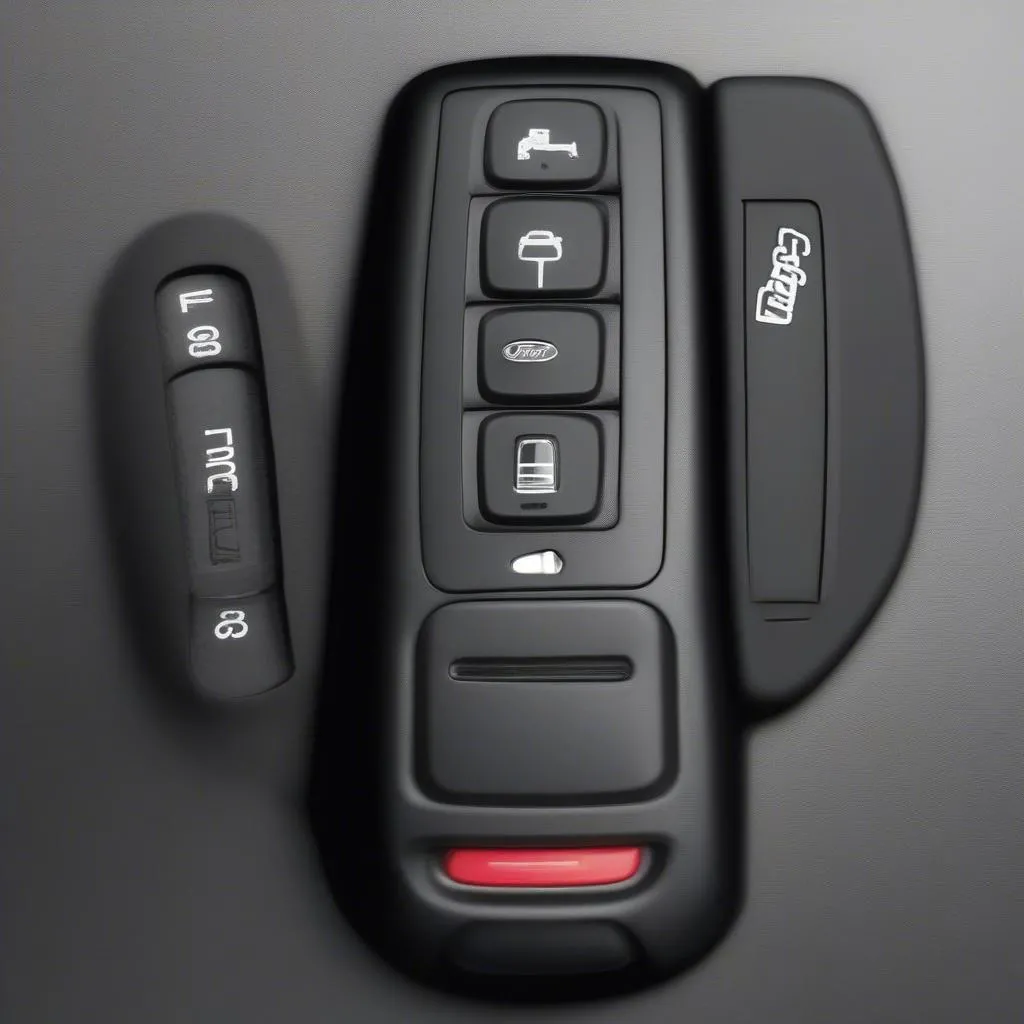The Volvo Truck Collision Warning with Full Auto Brake system is a crucial safety feature designed to prevent or mitigate collisions. When the system detects an impending collision, it provides audible and visual warnings to alert the driver. If the driver doesn’t react in time, the system can automatically apply the brakes to help avoid or lessen the impact. However, like any complex system, it can sometimes encounter issues. This comprehensive guide will walk you through common problems, troubleshooting steps, and potential solutions when experiencing problems with your Volvo truck’s collision warning and full auto brake system.
 Volvo Truck Dashboard Displaying Collision Warning
Volvo Truck Dashboard Displaying Collision Warning
Understanding the System
Before delving into troubleshooting, it’s helpful to understand the basic components and functionality of the system:
- Radar Sensor: Located at the front of the truck, this sensor detects objects in the vehicle’s path and measures their distance and speed.
- Camera (Optional): Some Volvo trucks also utilize a front-facing camera to enhance object detection and provide additional data to the system.
- Control Unit: The brain of the system, the control unit processes data from the sensors and determines if a collision is imminent.
- Warning System: When a potential collision is detected, the system issues visual (flashing lights on the dashboard) and audible (beeping sounds) warnings.
- Brake System Integration: If the driver doesn’t react, the system can engage the brakes automatically, applying varying levels of braking force depending on the severity of the situation.
Common Issues and Troubleshooting
Here are some common problems associated with the Volvo truck collision warning and full auto brake system:
1. “Collision Warning Service Required” Message
This message on your dashboard indicates a potential fault within the system.
Troubleshooting Steps:
- Visual Inspection: Check for any obvious obstructions, dirt, or damage to the radar sensor located on the front grille. Clean the sensor carefully if needed.
- Check Connections: Ensure that the wiring harnesses connected to the radar sensor and control unit are securely fastened.
- Software Update: Outdated software can sometimes lead to system glitches. Consult a Volvo dealership or certified technician to check for and install any available software updates.
 Volvo Truck Radar Sensor
Volvo Truck Radar Sensor
2. System Malfunctions in Certain Weather Conditions
Heavy rain, snow, or fog can interfere with the radar and camera, causing the system to malfunction or provide inaccurate warnings.
Troubleshooting Steps:
- Reduce Speed: When driving in adverse weather, reduce your speed and maintain a safe distance from other vehicles. This gives you more time to react and can help prevent false warnings.
- System Limitations: It’s important to remember that even advanced safety systems have limitations. Adverse weather can impair their effectiveness.
3. Intermittent or False Warnings
Experiencing warnings when there’s no apparent danger can be frustrating.
Troubleshooting Steps:
- Environmental Factors: Overhead structures like bridges, signs, or even strong reflections from other vehicles can sometimes trigger false warnings.
- Sensor Calibration: Over time, the radar sensor might require calibration. A Volvo technician can perform this using specialized diagnostic equipment.
4. System Not Engaging During a Potential Collision
This is a serious issue, as it indicates a potential failure to provide critical braking assistance.
Troubleshooting Steps:
- Seek Immediate Attention: Do not attempt to diagnose or repair this yourself. Contact a Volvo dealership or certified technician to inspect and diagnose the problem.
- System Diagnostics: Professional diagnostic tools can pinpoint faults within the system, which could be related to the radar, camera, control unit, or brake system integration.
 Volvo Truck Diagnostic Software
Volvo Truck Diagnostic Software
Remote Diagnostics and Software Solutions
Advancements in automotive technology now allow for remote diagnostics and software solutions. Volvo offers remote diagnostics capabilities, where authorized technicians can access your truck’s system data remotely to identify and diagnose issues. This can save time and potentially resolve problems without the need for a physical visit to a service center.
Importance of Professional Service
While understanding the basics can aid in troubleshooting minor issues, it’s crucial to emphasize that the Volvo truck collision warning with full auto brake is a complex safety system. Attempting repairs or adjustments without proper knowledge and equipment can be dangerous.
When in doubt, always consult a qualified Volvo technician for diagnosis and repair. They have the expertise, specialized tools, and access to software updates to ensure your system is functioning correctly.
FAQs
Q: Can I temporarily disable the collision warning system?
A: While you can adjust the warning sensitivity in some Volvo truck models, it’s not recommended to completely disable this crucial safety feature.
Q: How often should I have the system serviced?
A: It’s best to consult your Volvo truck’s maintenance schedule for specific service intervals. However, having the system checked annually or whenever you notice unusual behavior is a good practice.
Q: Does my truck’s warranty cover repairs to the collision warning system?
A: Warranty coverage varies depending on your truck’s model year and specific warranty terms. Contact your Volvo dealership for details about your warranty.

